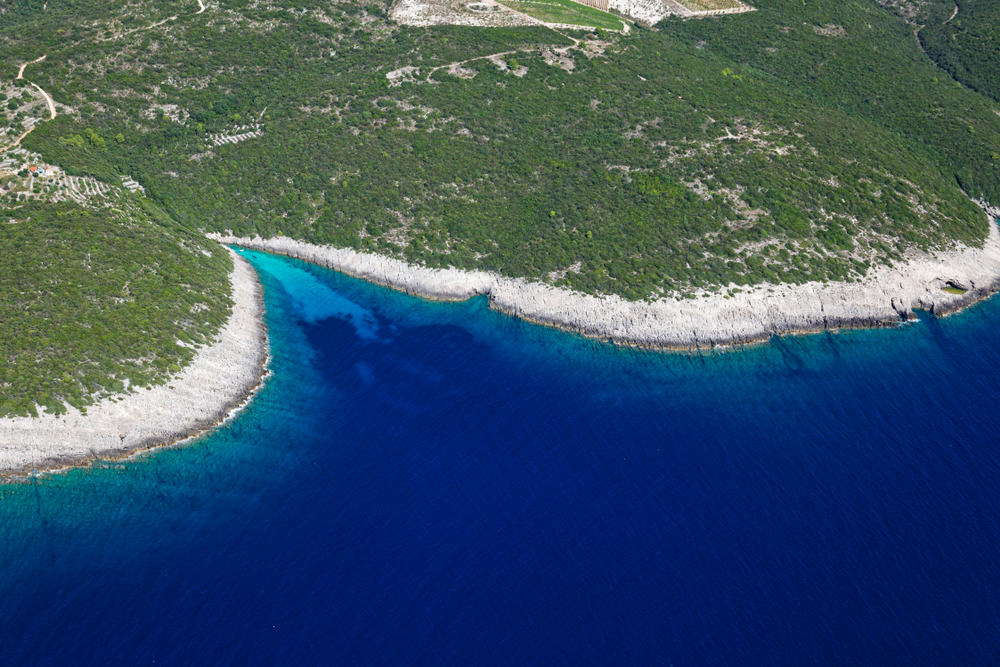Underwater Road Leads to Ancient Hvar Settlement
Posted on Categories Discover Magazine

Mate Parica is an archaeologist from the University of Zadar in Croatia, and in 2021, he discovered the sunken settlement of Soline after spotting something strange off the coast of the famous Croatian island of Korcula, the reported birthplace of Marco Polo.
After spotting the darkened shape, he thought, “Maybe it is natural, maybe not,” he later told Reuters.
A specialist in underwater archaeology, Parica thought he’d spotted a manmade structure submerged off the island’s eastern coast, so he and a colleague went to investigate.
Hvar Island Settlement Discovered
Diving underwater, they found remains of stone walls as well as some ceramic objects and flint knives. They later concluded that the settlement, part of an artificially created island, dated to almost 7,000 years ago and belonged to the Stone Age Hvar culture, which once thrived along the eastern Adriatic coast.
Earlier this month, the team working on the site announced that they had uncovered a new discovery, a submerged stone road that led from the former settlement to the Korcula shore. Suctioning off layers of mud, the divers had exposed carefully constructed stone slabs, according to an announcement on Facebook, that measured about four meters wide.
Read More: Shipwrecks, Volcanic Ash And Lost Cities Come To The Surface In Lake Mead
Ancient Hvar Pottery
The Hvar culture is better known for the Grapceva Cave, a site located on the southern part of the island of Hvar. Heavily excavated in the years after World War II, the cave established the Hvar culture as an early maritime society. Most famously, archaeologists found pottery here bearing the first known depiction of a boat in Europe.
“The fortunate thing is that this area, unlike most parts of the Mediterranean, is safe from big waves as many islands protect the coast,” Parica told Reuters. “That certainly helped preserve the site from natural destruction.”
Full of stalactites and stalagmites, the cave has a large and small hall where scientists found numerous other examples of pottery including dark ware patterned with ribbons and semicircles. As the Hvar often used looping shapes, scientists also found ceramics with complex spiral patterns painted in red, yellow, brown and white, according to Hvarska Cultura.
The Hvar that lived closer to modern-day Herzegovina painted pottery with scenes involving hunters, animals, houses, trees and the sun and moon. Like all of Hvar culture, they venerated the dead and crafted spiritually significant jewelry and small figurines.
More Neolithic Settlements Discovered
Parica and the rest of his team continue to investigate what the Hvar created at the sunken Soline site, which has few antecedents.
“We are not aware, at the moment, of a similar finding elsewhere that a Neolithic settlement was built on an islet connected with a narrow strip of land,” says Marta Kalebota, head of the archaeological collection in the Korcula town museum, in an interview with Reuters.
Parica’s road announcement on Facebook also hailed the discovery of a second sunken settlement on the western side of the island, where an initial exploration found flint blades, stone axes and fragments of millstones. The site, he says, was “almost identical” to Soline.
Read More: Stop Searching For Atlantis And Find These 4 Ancient Underwater Cities Instead